A strong defensive foundation is essential for any successful team. Effective tackling and marking techniques can help defenders win back possession, disrupt attacks, and provide stability at the back. This article covers key defensive drills designed to improve tackling precision and marking discipline, helping players become more effective in defensive situations.
1. Tackling Techniques and Drills
Tackling is one of the most important defensive skills, allowing players to regain possession without conceding fouls. There are different types of tackles, including standing tackles, block tackles, and slide tackles. Below are drills to improve tackling technique.
A. One-on-One Tackling Drill
Objective: Improve timing and execution of tackles in one-on-one situations.
Setup:
- Create a 10×10-yard grid with a small goal at each end.
- One attacker starts with the ball, and one defender starts a few yards away.
Instructions:
- The attacker tries to dribble past the defender and score in the small goal.
- The defender focuses on jockeying (not diving in too early) and winning the ball with a well-timed tackle.
- If the defender wins the ball, they switch roles with the attacker.
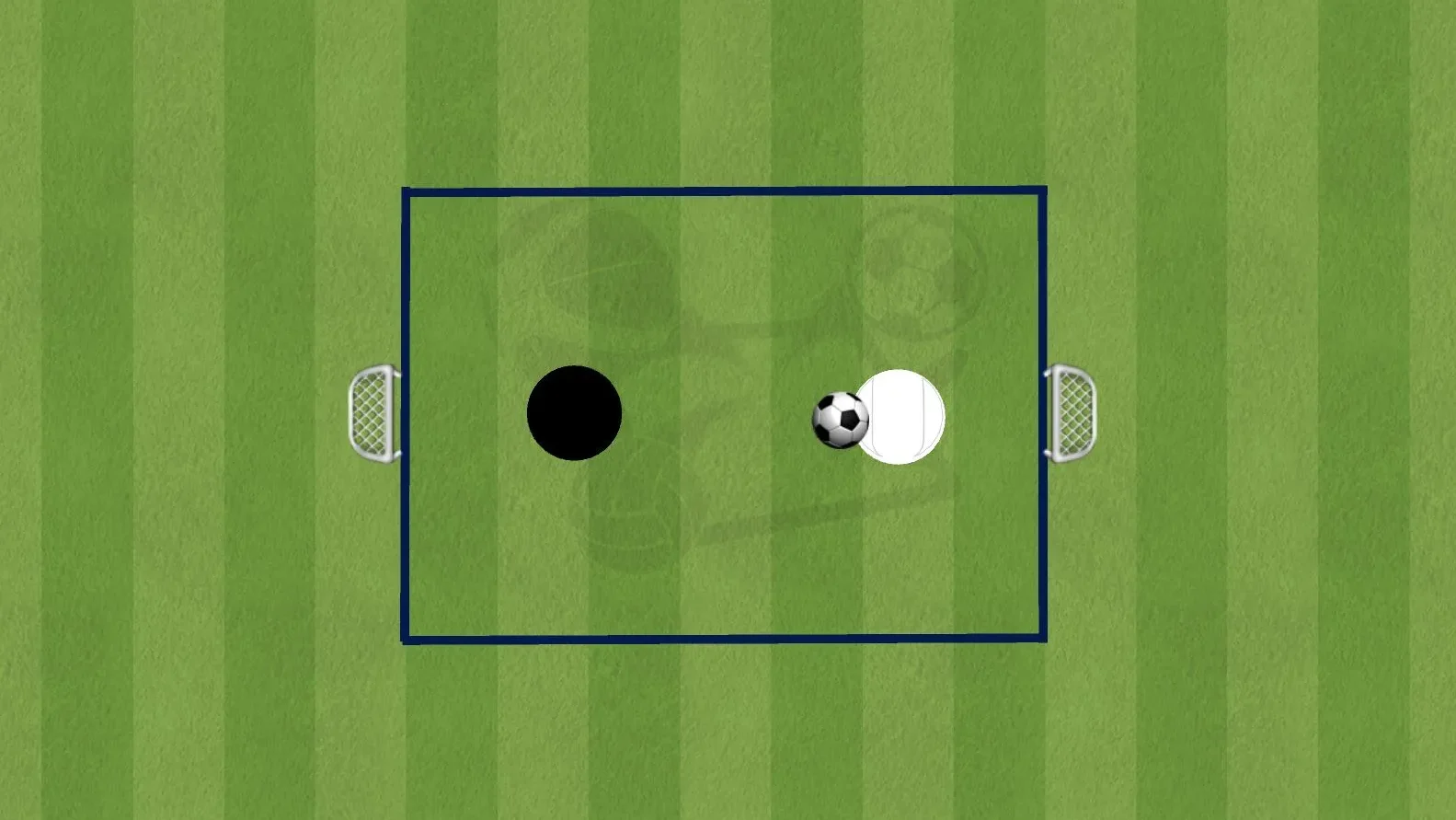
Coaching Points:
- Stay low with a balanced stance.
- Approach at an angle to limit the attacker’s options.
- Time the tackle correctly—don’t dive in too early.
B. Tackling Under Pressure Drill
Objective: Develop composure and effectiveness when making tackles under pressure.
Setup:
- Set up a small 3v3 area where defenders need to apply pressure and tackle attackers.
Instructions:
- Attackers try to maintain possession with quick passes and dribbling.
- Defenders must close down space and win the ball using clean tackles.
- If a defender wins possession, they transition into an attacking phase.
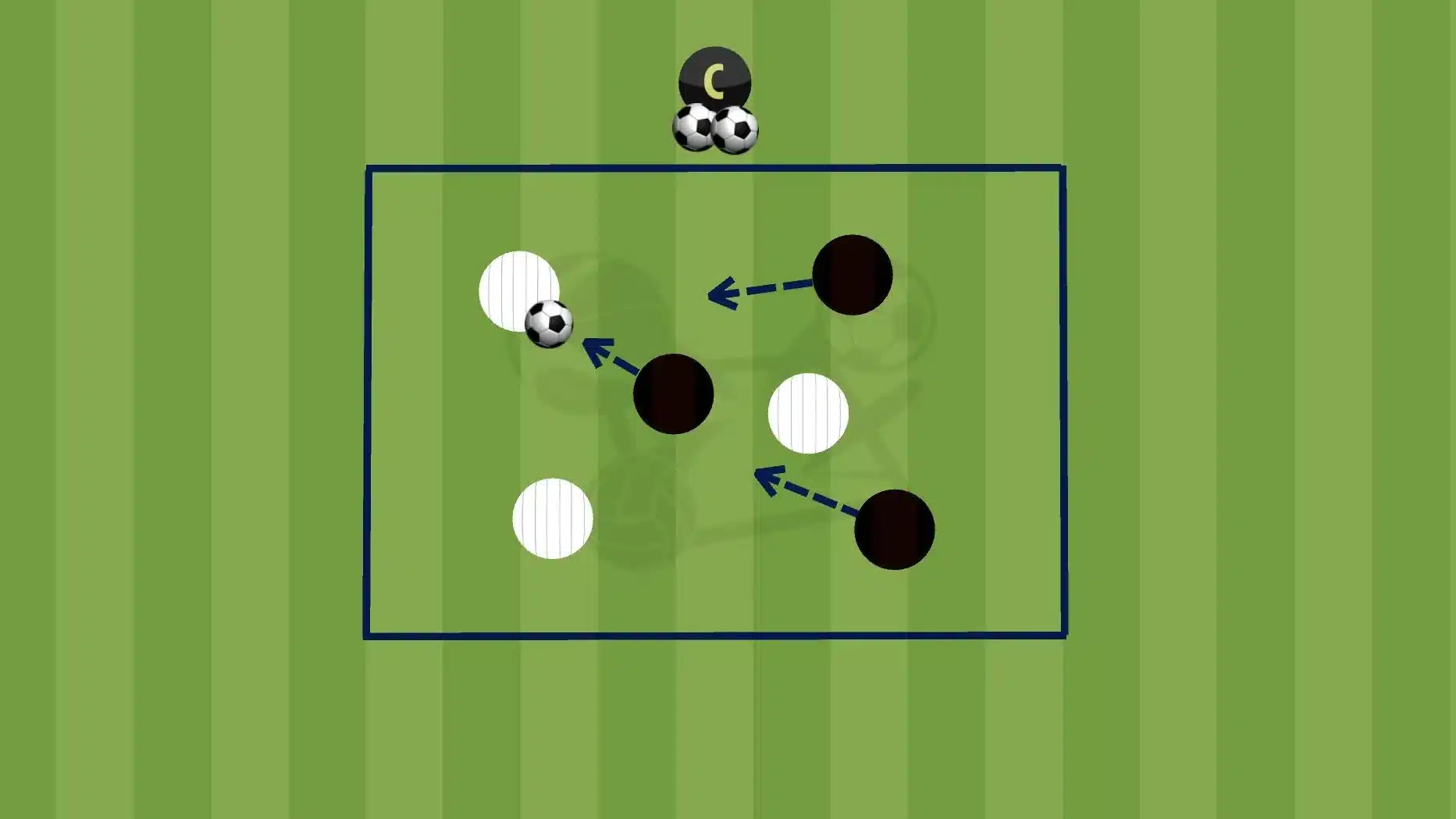
Coaching Points:
- Anticipate the attacker’s movement.
- Use the body to shield the ball after winning a tackle.
- Avoid reckless challenges—aim for precision.
2. Marking Techniques and Drills
Marking is crucial for preventing attackers from finding space and receiving the ball. There are two primary marking strategies:
- Man-to-Man Marking: Defenders stay tight on an assigned attacker.
- Zonal Marking: Defenders cover specific areas rather than individual players.
A. Shadow Marking Drill
Objective: Improve defenders’ ability to track attackers and maintain close marking.
Setup:
- Pair up defenders and attackers in a 20×20-yard space.
- One attacker has the ball outside of the area.
Instructions:
- Attackers move around, trying to lose their marker without the ball.
- Defenders must stay close and mirror their opponent’s movements.
- An attacker on the outside tries to find a teammate in the area with a pass.
- The defenders try to intercept the pass.
- Rotate roles after a set time.
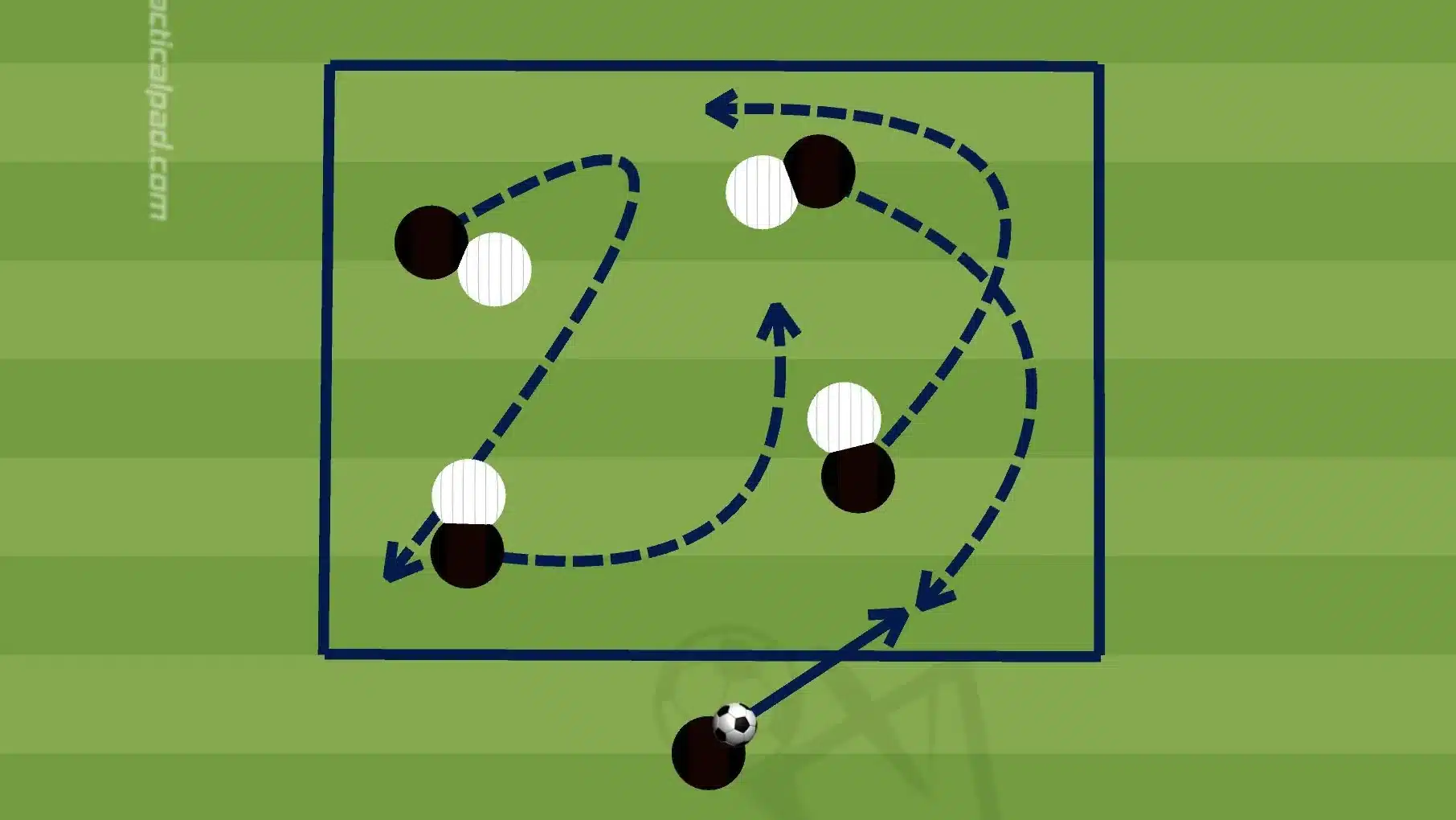
Coaching Points:
- Stay on the balls of the feet for quick reactions.
- Maintain an arm’s length distance—close enough to pressure but not too tight to be easily turned.
- Use peripheral vision to track the ball and the opponent simultaneously.
B. Defensive Positioning in a Backline Drill
Objective: Improve coordination between defenders when marking attackers.
Setup:
- Set up a defensive backline of 3-4 players against 3-4 attackers in a half-pitch scenario.
Instructions:
- The coach plays a pass into an attacking player.
- Defenders must communicate and shift as a unit, applying marking principles.
- Attackers try to create space, while defenders must maintain compactness and awareness.
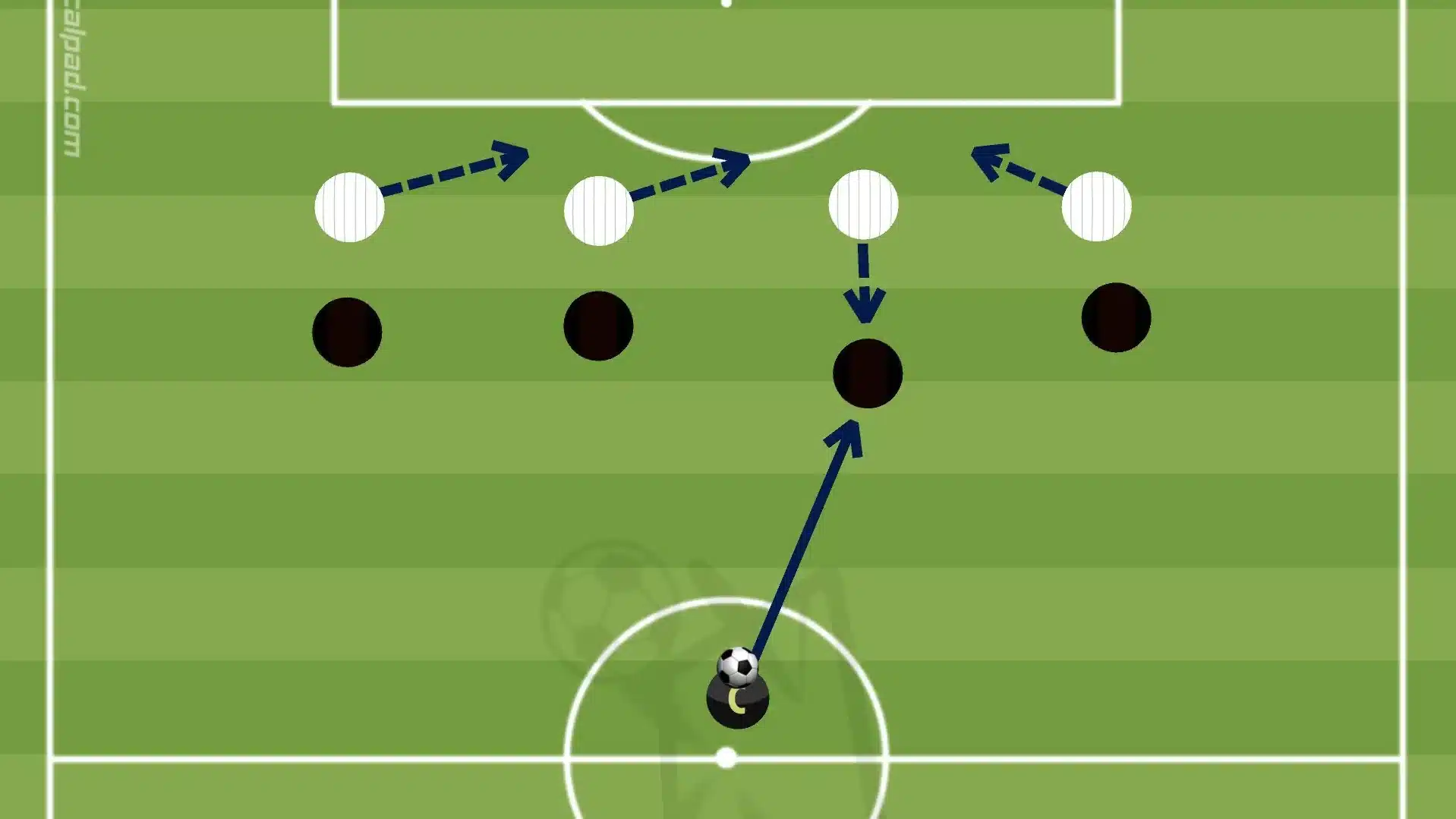
Coaching Points:
- Stay compact—reduce gaps between defenders.
- Communicate constantly to ensure effective marking.
- Read the attacker’s movement—anticipate runs rather than react late.
3. Applying Defensive Drills to Match Situations
Defenders must apply tackling and marking techniques effectively in real game situations. The following game-based drills simulate match conditions:
A. Small-Sided Defensive Battles
- Play 5v5 or 6v6 games in a small pitch with an emphasis on defensive responsibility.
- Defenders score points for winning tackles or successfully marking attackers.
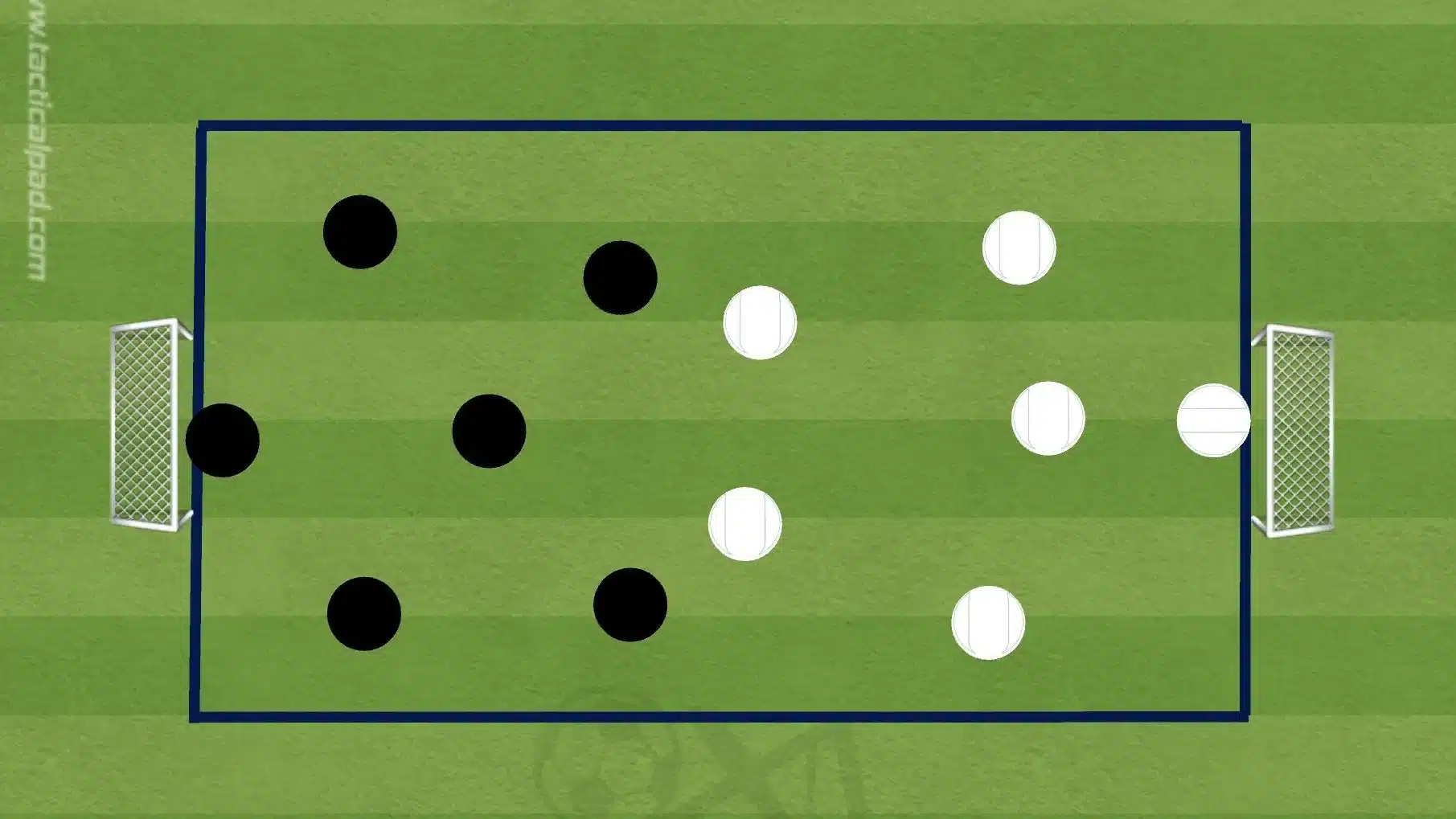
B. Transition Defense Drill
- Attackers start with an overload (e.g., 3v2), and defenders must recover and reorganize.
- Encourages quick decision-making and defensive positioning.

Conclusion
Mastering tackling and marking techniques is essential for strong defensive performances. These drills will help players refine their ability to win challenges, maintain tight marking, and organize defensively. By incorporating these exercises into training, defenders can become more reliable and effective in stopping opposition attacks.
For more football drills and tactical insights, check out our Football Drills section!
